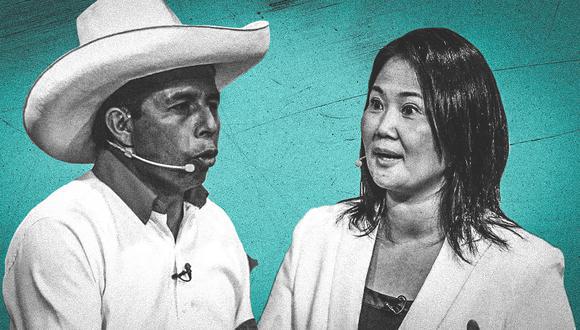RIO DE JANEIRO, BRAZIL – Defending the economic model or re-invent it is the dichotomy posed by Peru’s presidential candidates, Keiko Fujimori (right) and Pedro Castillo (left), which reveals the possibility of breaking long years of fiscal discipline and growth that nevertheless failed to narrow social gaps.
In the last 30 years, Peru achieved a certain prestige on the financial scene, due to the orderly management of its accounts and the stability of its income, which allowed it to increase savings.
However, the health crisis uncovered a weak health and social security system and wiped out the soundness of public accounts, while the loss of household income pushed 30% of the population into poverty and made another 33% vulnerable.

OPPOSITES
Peru voters will choose between Castillo and Fujimori this Sunday, but the president will only take office on July 28, the day Peru’s independence was declared 200 years ago.
The candidates are at ideological extremes and put forward diametrically different proposals regarding economic rescue and political and social management.
On the one hand, the trade unionist schoolteacher and candidate of Peru Libre has told his voters the idea that there cannot continue to be poor people in a country rich in natural resources.
NATIONALIZATION AND AGRARIAN REFORM
Castillo’s plan proposes the nationalization of natural resources, a new tax on excess profits from their exploitation, the establishment of royalties on their sale, and the renegotiation of contracts to review tax benefits for companies.
In addition, it calls for a second agrarian reform that combats land monopoly, reserves land for small-scale agriculture, and reduces food imports.
“The written plan is a much more statist and intrusive plan of the individual freedoms of the people, and the economic entities, than the 1979 Constitution (before the current one of 1993) even was,”said the former Minister of Economy (2014-2016), Alonso Segura.
“It resembles much more what Venezuela has done. Some want to compare it to Ecuador or Bolivia, but this goes much, much further,” added the professor at the Pontificia Universidad Católica del Perú.
GOING OVERBOARD
Segura pointed out that when they talk about nationalization, they do it about the mining sector, “but in the plan, they talk about nationalizing in a multiplicity of economic sectors, not only in mining”.
“When they talk about disregarding contracts, they have now talked about tax stability contracts in multiple economic sectors. It is going overboard”, he expressed.
For the economist, to propose an agrarian reform in Peru, which is experiencing an agro-export boom, is incomprehensible, because the country already experienced an agrarian reform between 1960 and 1980, and a greater productive capacity was not created.
AGAINST FOOD IMPORTS
However, in the public debate of Peru Libre’s economic plan, its coordinator Juan Pari stated that the current economic model “had led us to be dependent, we do not have food sovereignty, agriculture has not been developed.”
“We are an open economy, we sustain it. We will import what the country needs, but we will work to strengthen our economy,” expressed Pari. The former legislator affirmed that “they (Fujimori) are doing the same as the Venezuelan system, thinking that only extractive mining will save Peru.”
HER FATHER’S MODEL
The daughter of former president Alberto Fujimori defends to the letter the economic model that her father established in the 1993 Constitution, to escape the hyperinflation and isolation caused by Alan García in his first government (1985-1990).
That model allowed an annual growth of 7% between 1993 and 2013, with poverty reduction to 24% in 2012.
But it did nothing to narrow the huge social gaps or provide decent public services to the vast majority of citizens. With the pandemic, these limitations have become evident.
Despite her defense of the model, the pressing social needs have led Fujimori to propose 40% of mining royalties going directly to the population, bypassing the intermediation of the regional governments that receive it to execute public works and services.
The candidate also promises to double pensions for the elderly in extreme poverty and increase the number of beneficiaries by 500,000 people each year of her government, which seemingly contradicts her praise of “financial stability”.
UNFEASIBLE CAMPAIGN PROMISES
Segura affirmed that these proposals are “a continuity of policies that already exist”, and that some would have to be revised as “unfeasible or anti-technical and that they will not solve the underlying problems”.
Regarding the royalties, the former minister said that it responds to the frustration of the population that feels that they have not received “enough prosperity”. The risk of applying it is that “it will be tough to limit it to mining.” “Other sectors will also want the same benefit, such as hydrocarbons, gas or forestry”, he predicted.
From Pari’s point of view, “poverty cannot be addressed with gifts. People want work, business” because gifts “lead to electoral substances that fade away” with time.

